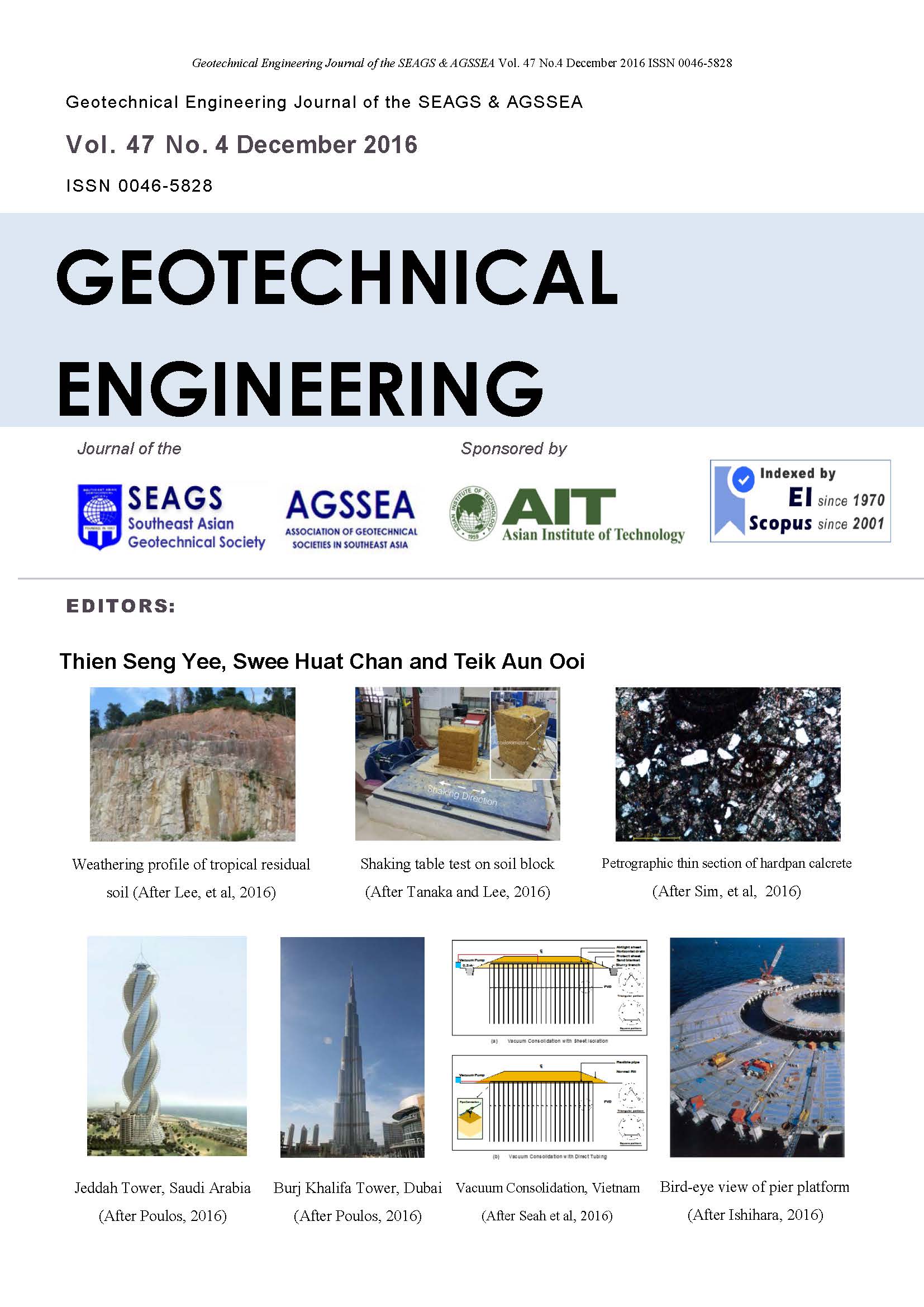On The Preconsolidation Pressure: Experience Based on Testing the Holocene Marine Clay of Peninsula Malaysia
Main Article Content
Abstract
Prediction of the consolidation settlement of very soft alluvial clays in general requires knowledge of the compressibility characteristics of the deposit, but in particular it requires an accurate determination of the preconsolidation pressure. This defines the value of vertical effective stress where settlement behaviour changes from overconsolidated (OC) to normally consolidated (NC). In the OC stress range settlements are likely to be relatively small, but once into the NC range, they can become very large. Therefore the accurate determination of the preconsolidation pressure is essential if reliable consolidation settlement predictions are to be made. This is examined in detail by back analysing settlement data from two trial embankments which were built over 13m of Holocene marine clay at Juru (south of Butterworth), as part of the geotechnical investigations carried out for the North-South Expressway project over the period 1990 to 1991, then making comparisons to settlement calculated from measured compressibility properties. The definitive determination of preconsolidation pressure is derived from the behaviour of the trial embankment itself, which is then compared with assessments based on undrained shear strength, oedometer test results and piezocone tests. Issues and potential misuse of all these test methods are examined, and test procedures described to minimise related inaccuracy.
Article Details

This work is licensed under a Creative Commons Attribution-NonCommercial-NoDerivatives 4.0 International License.
Copyright © 2019 Association of Geotechnical Societies in Southeast Asia (AGSSEA) - Southeast Asian Geotechnical Society (SEAGS).


